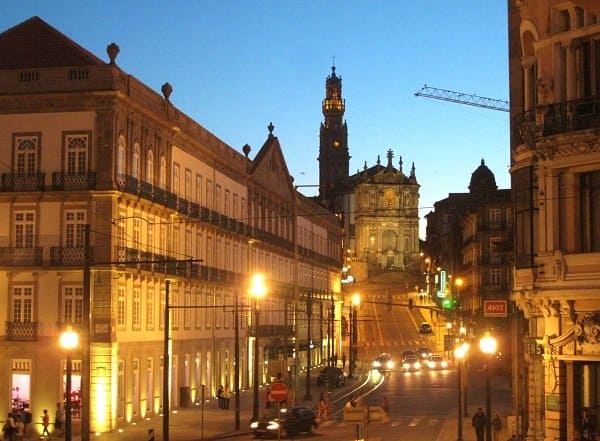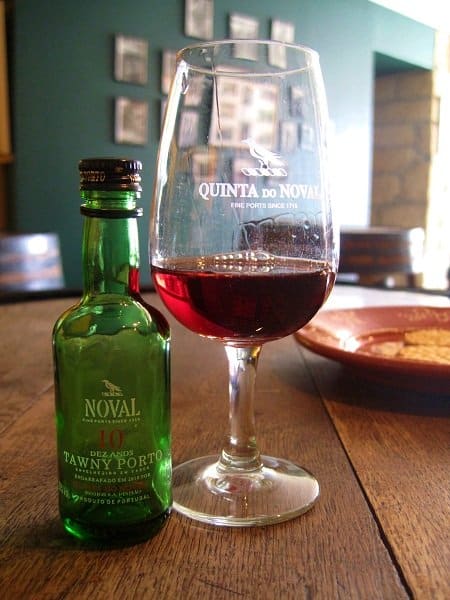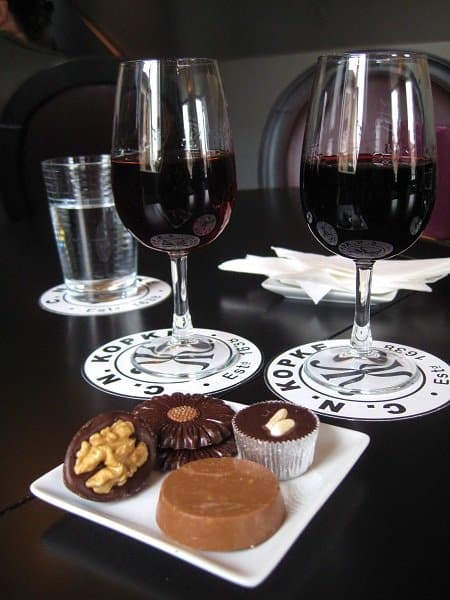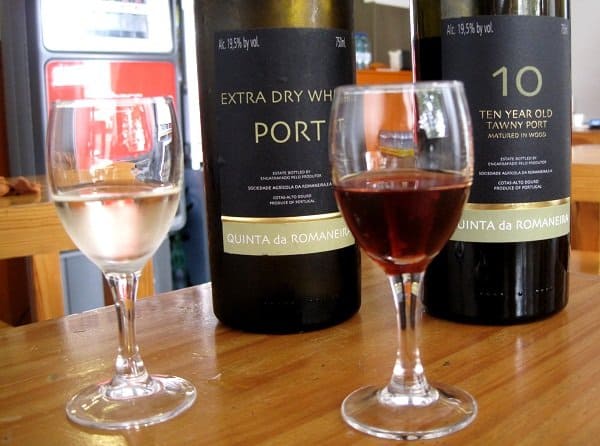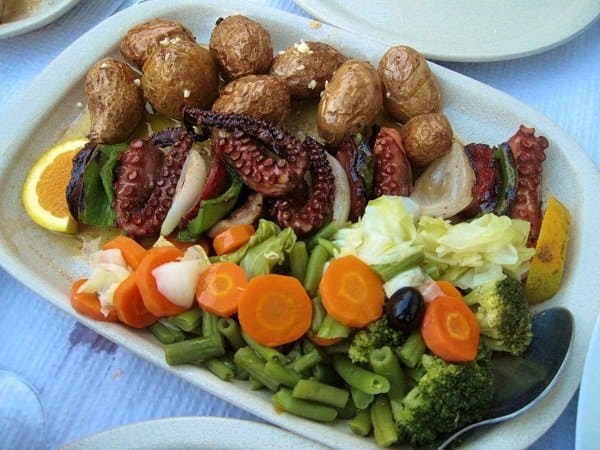Porto is a lovely city, more manageable than Lisbon in size and with similar charms. Set on the Douro river with impressive bridges providing access between its shores, the UNESCO World Heritage Site just feels welcoming. Its residents are very friendly and also have a reputation for being hard-working. One resident tells us that everyone knows everyone else in Porto.
Visitors may recognize Porto’s name from one of Portugal’s popular exports: port wine. We dedicated an entire afternoon to sampling these fine fortified wines, most commonly served as aperitifs and after-dinner drinks. Tasting Porto wine is simple; no tour is required. Wander down to the Ribeira waterfront and cross the Dom Luis I Bridge to Vila Nova de Gaia. Pick up a Port Wine Cellars map from the information kiosk across the street from C.N. Kopke and ask someone there about what’s on.
We began at Wiese & Krohn, which usually offers free tastings and a tour of the cellars. Tours were off on the day we went because of production activities, however we were offered free samples of one white and one red port wine. We had never tried white port wine and were told that they come in dry, medium and sweet styles. The medium style was delicious and not too sweet. We also tasted one ruby and one tawny port.
Both ruby and tawny ports are blended wines. Ruby ports are usually about three years old while tawny ports are older, between ten and forty years old. The most special port wines, of course, are Vintage; these are only made in limited amounts (sometimes only one or two bottles), must be cellared for at least 15 years and then consumed within two days of opening. With price to consider these are indeed special bottles! Late Bottle Vintage (LBV) ports, made from one grape and not blended, can provide a similar experience to vintage ports without the need for bottle ageing. Other port styles exist but these were the primary ones we encountered for tasting.
We moved on to C. Da Silva, Quinta do Noval and C.N.Kopke for more tastings. Most of the cellar visitor centres charge for tastings. It helps to know what you like before proceeding to these and making expensive mistakes. Our samples at C. Da Silva were free and we had a nice discussion with the woman working there about the origin of port wine and the producer. Primarily five varieties of grapes are grown in the Douro River Valley at least 70 kilometres from Porto. Initial production is also done there before the wines are moved to the city for ageing, storage and sales.
While we didn’t have time to visit, we learned that W & J Graham offer tours and tastings in different languages from €3 – a shuttle bus is available from the Dom Luis I bridge (lower) to save visitors the walk up the hill. A.A. Calem offers a port and Fado traditional music evening, including a tour, tastings and performance (except Mondays).
Our last stop of the day was a corner café for a bottle of water. Here we were also offered free samples from a producer that doesn’t have a visitor centre. Delicious!
After a day of tasting port wine, don’t miss some of Porto’s wonderful restaurants. To save money we walked away from the river and discovered a small restaurant serving grilled specialties. Fresh seafood and meats are delicious everywhere in Portugal and we ordered a bottle of wine to accompany our grilled octopus and pork skewers. These arrived with mountains of rice, french fries, potatoes and vegetables included. Our bill was just over €25!
The views from either side of the Douro are outstanding. Cafes and meeting places line the river on the city side, where you can sit with little to worry about other than what to drink. On the other side, you can see how the river winds its way to the last bridge in the distance. Porto is a little cooler than Lisbon, but also not as breezy. The setting is beautiful and definitely worth the three-hour journey from the capital.
For more information on Porto wines and tours, visit the Association of Port Wine Companies.
Are you a port wine drinker? Have you ever tasted wine in Porto?
